#Simca engine
Explore tagged Tumblr posts
Text



Peugeot 505 Turbo Injection, 1982. The 505 was Peugeot's last rear wheel drive saloon. It was designed at Pininfarina and first introduced in 1979. The Turbo Injection used a 2,155cc Simca Type 180 engine (inherited when Peugeot took over Chrysler Europe) as the block was stronger than other engines Peugeot fitted to the 505.
#Peugeot#Peugeot 505#Peugeot 505 Turbo Injection#turbocharged#sports sedan#Simca engine#1982#1980s#Pininfarina#fuel injection#rear wheel drive#last of the line
117 notes
·
View notes
Text



Cistilia-Abarth 204
With resources and talent from the defunct Cisitalia Automobili, Carlos Abarth started his own company called Abarth & C. in Turin and the 204 A roadster was his first car. He acquired the remnants of Cisitalia including the 204 which he had modified by Porsche to fit their torsion bar rear suspension.
Visually the cars appeared like a scaled-down version of the Cisitalia grand prix cars. The engine was derived from a Fiat 1089cc unit fitted with twin Webers.
The car was successfully raced in the 1949 season by the Cisitalia-Carlo Abarth Team in the 1200cc class. After wins by Pierro Taruffi at the Circuit of Reggio Emilia and the Aosta-Gran San Bernardo, it looked like Abarth was set to take the Grand Prix of Madrid. Unfortunately all the 204s failed, leaving victory to the Simca-Gordini. That year Taruffi still clinched the F2 title for sports cars.
By 1950, Abarth removed all the Cisitalia logos from the 204 and prepared extensively for Tazio Nuvolari’s drive in the 10th Giro de Sicilia. At 57 years old, this was Nuvolari’s last stab at professional racing. He won the Palmero-Monte Pellegrino hillcimb which was his last victory in professional racing. Nuvolari retired from the team before the great Sicilian race.
38 notes
·
View notes
Text
French GP 1950: Grand Prix #6 in Formula 1 history
The race took place on 2 July 1950 in Reims and Alfa Romeo drivers were in the first three positions in qualifying, with Juan Manuel Fangio scoring pole ahead of Nino Farina and their team-mate being behind them as usual. Farina took the lead at the start though and led at the beginning of the race, before issues forced him to a minutes-long pitstop which dropped him out of the points. He recovered to p3 (behind his team mates), just to have to retire.
Alfa did a 1/2 with Fangio and Fagioli, with Peter Whitehead getting third position in a Ferrari. Robert Manzon from Simca Gordini was fourth and fifth was a Talbot-Lago from a shared drive: drivers were Philippe Etancelin and Eugene Chaboud: back in the days it was allowed, when a driver retired, to continue the race just by replacing a team-mate.
To make it easier to understand, it would be like nowadays Max Verstappen retired due to engine failure, Checo Perez was called back in the pits and had to get off the car to give it to Verstappen to allow him to race. In the end they would share the result, so in case Verstappen wins, both he and Perez are declared the winners and the points are split based on the laps percentage driven by the both. Such a mess, right? ;-)
#1950's f1#f1 1950#french gp#juan manuel fangio#nino farina#luigi fagioli#peter whitehead#robert manzon#philippe etancelin#eugene chaboud#alfa romeo#ferrari#classic f1#retro f1#vintage f1
1 note
·
View note
Text
The hatchback body style remains widely popular today for its versatile cargo access and sporty profile. But what car first pioneered this practical body style, essentially birthing the hatchback as we know it? This guide explores the origins and earliest examples of hatchback cars that led to the design becoming mass-produced and mainstream. Defining the Hatchback Car Body Style First, let's outline the definitive characteristics of what qualifies a car as a hatchback: Two box shape with shared passenger and cargo areas Rear door provides full access to cargo space Rear seat folds fully flat to maximize storage Wheels positioned at corners to optimize interior room Distinctive sloped rear roofline profile The combination of the fold-down rear seat and wide opening rear door provides the utility that differentiates hatchbacks from traditional sedans or coupes. Pinpointing the First True Hatchback Model While some pre-war cars had rear openings, most historians credit the 1949 Aston Martin DB2 with pioneering the modern hatchback design. Key traits that set it apart: Rear door opened upward via hinges at the roofline rather than a trunk lid Body profile with continuous rear roof slope without separate trunk Rear compartment accessed from rear door without divider Rear seat designed to fold flat into the floor The DB2 established the quintessential hatchback profile that became prevalent - no distinct trunk bulge or division from the rear seats. It incorporated now-standard traits like roof-hinged doors and folding rear seats. This groundbreaking combination helped it earn the title of the first true hatchback. Why the DB2 Marked a Design Milestone Prior to the DB2, no production automobile so seamlessly blended rear passenger and cargo space into one unified area accessed by an upward swinging rear door. Its smooth, continuous rear roofline running into the tail of the car was also a novelty for a rear-door vehicle. The DB2's flexible cargo space and rear access via the sloped roofline door would go on to become hallmarks of all modern hatchback designs as other automakers followed suit. Aston Martin's innovative thinking represented a pioneering milestone in automotive engineering and functionality. The Influence of Early Hatchback Concept Cars A few notable concept cars in the decade prior to the DB2 also showed hatchback elements that previewed the style: General Motors Le Sabre (1951) Two box, sloped rear roof design Rear seats that fold into rear floor area Simca Cargo (1953) Station wagon-inspired hatch opening over rear seat Models called "Break" or "Commerciale" Fiat 1100 Familiare (1956) Wagon-like rear access over fold-down seat Marketed as family/cargo vehicle These designs generated discussion around blending utility and performance in new formats. Consumer interest helped pave the way for Aston Martin's defining DB2 production model. Growth of Hatchback Popularity in the 1960s and 70s After the DB2 proved the format could work, mass-market auto brands began offering affordable hatchback models appealing to mainstream buyers: Renault 4 (1961) Austin Mini Countryman (1961) AMC Gremlin (1970) Volkswagen Scirocco (1974) Honda Civic (1973) This proliferation of economy priced hatchbacks firmly established the body style in the industry and consumer consciousness. They became a standard rather than novelty model option. Reviewing Pioneering Hatchback Contenders Some mark alternative early cars as the "first" hatchbacks, though they lacked some definitive traits: Citroen Traction Avant (1934) Had a rear door but no fold-down rear seat dividing cargo area. Considered a sedan or saloon. Renault 4CV (1946) Inspired the Renault 4 but had enclosed trunk separated from cabin. Lacked unified cargo access of a true hatchback. Kaiser-Frazer Vagabond (1953) One of the earliest American hatchback efforts but never reached production.
Mercedes Benz 190SL (1955) Had rear pass through from cabin to trunk but no shared uninterrupted cargo space. Why the DB2 Stands Out From Early Hatchback-Like Vehicles Previous models incorporated some hatchback elements but lacked key features like fold-down rear seats or unified rear cargo space fully incorporated into the body design. The DB2 brought these traits together in the complete package that set the template modern hatchbacks follow - an integrated rear storage accessed by an upward rear door at the sloped roofline. This innovative combination earns it the title of the first true hatchback. The DB2 Hatchback's Lasting Legacy The DB2 proved that utility and performance need not be mutually exclusive in an automobile. Its fresh thinking influenced hatchback development across Europe and Asia. Within 20 years, affordable mass-produced hatchbacks from brands like Honda and Volkswagen became commonplace worldwide. Over 70 years after its debut, Aston Martin's pioneering DB2 remains appreciated as the original hatchback that started a trend which reshaped auto design forever. Its revolutionary rethink of rear storage access lives on in the millions of hatchback models enjoyed by drivers today. FAQs What was the first Japanese hatchback model? The 1973 Honda Civic was the first Japanese-made hatchback, establishing the body style's popularity in the Japanese auto industry. Were early hatchbacks based on wagons? Yes, early hatchback concepts often drew inspiration from station wagons and shooting brakes for their cargo space. Why did hatchbacks grow more common in the 1960s and 70s? The increasing focus on affordability and functionality made hatchbacks appealing for economy car brands. Their versaility also suited the youth culture. Did American automakers produce any early hatchbacks? While not as quickly embraced as in Europe and Asia, American brands like AMC tried hatchback models in the 1960s and 70s. The AMC Gremlin was an early example. When did hatchbacks become mainstream in North America? Hatchbacks really went mainstream in the 1980s, with models like the VW Golf GTI and Mazda GLC. By the 1990s they were ubiquitous worldwide. The post-war Aston Martin DB2 is considered the first production automobile to fully exemplify the hatchback formula - an innovative achievement that inspired the body style's rise worldwide. #Wiack #Car #CarInsurance #CarRental #CarPrice #AutoLoans
0 notes
Text
The hatchback body style remains widely popular today for its versatile cargo access and sporty profile. But what car first pioneered this practical body style, essentially birthing the hatchback as we know it? This guide explores the origins and earliest examples of hatchback cars that led to the design becoming mass-produced and mainstream. Defining the Hatchback Car Body Style First, let's outline the definitive characteristics of what qualifies a car as a hatchback: Two box shape with shared passenger and cargo areas Rear door provides full access to cargo space Rear seat folds fully flat to maximize storage Wheels positioned at corners to optimize interior room Distinctive sloped rear roofline profile The combination of the fold-down rear seat and wide opening rear door provides the utility that differentiates hatchbacks from traditional sedans or coupes. Pinpointing the First True Hatchback Model While some pre-war cars had rear openings, most historians credit the 1949 Aston Martin DB2 with pioneering the modern hatchback design. Key traits that set it apart: Rear door opened upward via hinges at the roofline rather than a trunk lid Body profile with continuous rear roof slope without separate trunk Rear compartment accessed from rear door without divider Rear seat designed to fold flat into the floor The DB2 established the quintessential hatchback profile that became prevalent - no distinct trunk bulge or division from the rear seats. It incorporated now-standard traits like roof-hinged doors and folding rear seats. This groundbreaking combination helped it earn the title of the first true hatchback. Why the DB2 Marked a Design Milestone Prior to the DB2, no production automobile so seamlessly blended rear passenger and cargo space into one unified area accessed by an upward swinging rear door. Its smooth, continuous rear roofline running into the tail of the car was also a novelty for a rear-door vehicle. The DB2's flexible cargo space and rear access via the sloped roofline door would go on to become hallmarks of all modern hatchback designs as other automakers followed suit. Aston Martin's innovative thinking represented a pioneering milestone in automotive engineering and functionality. The Influence of Early Hatchback Concept Cars A few notable concept cars in the decade prior to the DB2 also showed hatchback elements that previewed the style: General Motors Le Sabre (1951) Two box, sloped rear roof design Rear seats that fold into rear floor area Simca Cargo (1953) Station wagon-inspired hatch opening over rear seat Models called "Break" or "Commerciale" Fiat 1100 Familiare (1956) Wagon-like rear access over fold-down seat Marketed as family/cargo vehicle These designs generated discussion around blending utility and performance in new formats. Consumer interest helped pave the way for Aston Martin's defining DB2 production model. Growth of Hatchback Popularity in the 1960s and 70s After the DB2 proved the format could work, mass-market auto brands began offering affordable hatchback models appealing to mainstream buyers: Renault 4 (1961) Austin Mini Countryman (1961) AMC Gremlin (1970) Volkswagen Scirocco (1974) Honda Civic (1973) This proliferation of economy priced hatchbacks firmly established the body style in the industry and consumer consciousness. They became a standard rather than novelty model option. Reviewing Pioneering Hatchback Contenders Some mark alternative early cars as the "first" hatchbacks, though they lacked some definitive traits: Citroen Traction Avant (1934) Had a rear door but no fold-down rear seat dividing cargo area. Considered a sedan or saloon. Renault 4CV (1946) Inspired the Renault 4 but had enclosed trunk separated from cabin. Lacked unified cargo access of a true hatchback. Kaiser-Frazer Vagabond (1953) One of the earliest American hatchback efforts but never reached production.
Mercedes Benz 190SL (1955) Had rear pass through from cabin to trunk but no shared uninterrupted cargo space. Why the DB2 Stands Out From Early Hatchback-Like Vehicles Previous models incorporated some hatchback elements but lacked key features like fold-down rear seats or unified rear cargo space fully incorporated into the body design. The DB2 brought these traits together in the complete package that set the template modern hatchbacks follow - an integrated rear storage accessed by an upward rear door at the sloped roofline. This innovative combination earns it the title of the first true hatchback. The DB2 Hatchback's Lasting Legacy The DB2 proved that utility and performance need not be mutually exclusive in an automobile. Its fresh thinking influenced hatchback development across Europe and Asia. Within 20 years, affordable mass-produced hatchbacks from brands like Honda and Volkswagen became commonplace worldwide. Over 70 years after its debut, Aston Martin's pioneering DB2 remains appreciated as the original hatchback that started a trend which reshaped auto design forever. Its revolutionary rethink of rear storage access lives on in the millions of hatchback models enjoyed by drivers today. FAQs What was the first Japanese hatchback model? The 1973 Honda Civic was the first Japanese-made hatchback, establishing the body style's popularity in the Japanese auto industry. Were early hatchbacks based on wagons? Yes, early hatchback concepts often drew inspiration from station wagons and shooting brakes for their cargo space. Why did hatchbacks grow more common in the 1960s and 70s? The increasing focus on affordability and functionality made hatchbacks appealing for economy car brands. Their versaility also suited the youth culture. Did American automakers produce any early hatchbacks? While not as quickly embraced as in Europe and Asia, American brands like AMC tried hatchback models in the 1960s and 70s. The AMC Gremlin was an early example. When did hatchbacks become mainstream in North America? Hatchbacks really went mainstream in the 1980s, with models like the VW Golf GTI and Mazda GLC. By the 1990s they were ubiquitous worldwide. The post-war Aston Martin DB2 is considered the first production automobile to fully exemplify the hatchback formula - an innovative achievement that inspired the body style's rise worldwide. #Wiack #Car #CarInsurance #CarRental #CarPrice #AutoLoans
0 notes
Text
The hatchback body style remains widely popular today for its versatile cargo access and sporty profile. But what car first pioneered this practical body style, essentially birthing the hatchback as we know it? This guide explores the origins and earliest examples of hatchback cars that led to the design becoming mass-produced and mainstream. Defining the Hatchback Car Body Style First, let's outline the definitive characteristics of what qualifies a car as a hatchback: Two box shape with shared passenger and cargo areas Rear door provides full access to cargo space Rear seat folds fully flat to maximize storage Wheels positioned at corners to optimize interior room Distinctive sloped rear roofline profile The combination of the fold-down rear seat and wide opening rear door provides the utility that differentiates hatchbacks from traditional sedans or coupes. Pinpointing the First True Hatchback Model While some pre-war cars had rear openings, most historians credit the 1949 Aston Martin DB2 with pioneering the modern hatchback design. Key traits that set it apart: Rear door opened upward via hinges at the roofline rather than a trunk lid Body profile with continuous rear roof slope without separate trunk Rear compartment accessed from rear door without divider Rear seat designed to fold flat into the floor The DB2 established the quintessential hatchback profile that became prevalent - no distinct trunk bulge or division from the rear seats. It incorporated now-standard traits like roof-hinged doors and folding rear seats. This groundbreaking combination helped it earn the title of the first true hatchback. Why the DB2 Marked a Design Milestone Prior to the DB2, no production automobile so seamlessly blended rear passenger and cargo space into one unified area accessed by an upward swinging rear door. Its smooth, continuous rear roofline running into the tail of the car was also a novelty for a rear-door vehicle. The DB2's flexible cargo space and rear access via the sloped roofline door would go on to become hallmarks of all modern hatchback designs as other automakers followed suit. Aston Martin's innovative thinking represented a pioneering milestone in automotive engineering and functionality. The Influence of Early Hatchback Concept Cars A few notable concept cars in the decade prior to the DB2 also showed hatchback elements that previewed the style: General Motors Le Sabre (1951) Two box, sloped rear roof design Rear seats that fold into rear floor area Simca Cargo (1953) Station wagon-inspired hatch opening over rear seat Models called "Break" or "Commerciale" Fiat 1100 Familiare (1956) Wagon-like rear access over fold-down seat Marketed as family/cargo vehicle These designs generated discussion around blending utility and performance in new formats. Consumer interest helped pave the way for Aston Martin's defining DB2 production model. Growth of Hatchback Popularity in the 1960s and 70s After the DB2 proved the format could work, mass-market auto brands began offering affordable hatchback models appealing to mainstream buyers: Renault 4 (1961) Austin Mini Countryman (1961) AMC Gremlin (1970) Volkswagen Scirocco (1974) Honda Civic (1973) This proliferation of economy priced hatchbacks firmly established the body style in the industry and consumer consciousness. They became a standard rather than novelty model option. Reviewing Pioneering Hatchback Contenders Some mark alternative early cars as the "first" hatchbacks, though they lacked some definitive traits: Citroen Traction Avant (1934) Had a rear door but no fold-down rear seat dividing cargo area. Considered a sedan or saloon. Renault 4CV (1946) Inspired the Renault 4 but had enclosed trunk separated from cabin. Lacked unified cargo access of a true hatchback. Kaiser-Frazer Vagabond (1953) One of the earliest American hatchback efforts but never reached production.
Mercedes Benz 190SL (1955) Had rear pass through from cabin to trunk but no shared uninterrupted cargo space. Why the DB2 Stands Out From Early Hatchback-Like Vehicles Previous models incorporated some hatchback elements but lacked key features like fold-down rear seats or unified rear cargo space fully incorporated into the body design. The DB2 brought these traits together in the complete package that set the template modern hatchbacks follow - an integrated rear storage accessed by an upward rear door at the sloped roofline. This innovative combination earns it the title of the first true hatchback. The DB2 Hatchback's Lasting Legacy The DB2 proved that utility and performance need not be mutually exclusive in an automobile. Its fresh thinking influenced hatchback development across Europe and Asia. Within 20 years, affordable mass-produced hatchbacks from brands like Honda and Volkswagen became commonplace worldwide. Over 70 years after its debut, Aston Martin's pioneering DB2 remains appreciated as the original hatchback that started a trend which reshaped auto design forever. Its revolutionary rethink of rear storage access lives on in the millions of hatchback models enjoyed by drivers today. FAQs What was the first Japanese hatchback model? The 1973 Honda Civic was the first Japanese-made hatchback, establishing the body style's popularity in the Japanese auto industry. Were early hatchbacks based on wagons? Yes, early hatchback concepts often drew inspiration from station wagons and shooting brakes for their cargo space. Why did hatchbacks grow more common in the 1960s and 70s? The increasing focus on affordability and functionality made hatchbacks appealing for economy car brands. Their versaility also suited the youth culture. Did American automakers produce any early hatchbacks? While not as quickly embraced as in Europe and Asia, American brands like AMC tried hatchback models in the 1960s and 70s. The AMC Gremlin was an early example. When did hatchbacks become mainstream in North America? Hatchbacks really went mainstream in the 1980s, with models like the VW Golf GTI and Mazda GLC. By the 1990s they were ubiquitous worldwide. The post-war Aston Martin DB2 is considered the first production automobile to fully exemplify the hatchback formula - an innovative achievement that inspired the body style's rise worldwide. #Wiack
0 notes
Text
The hatchback body style remains widely popular today for its versatile cargo access and sporty profile. But what car first pioneered this practical body style, essentially birthing the hatchback as we know it? This guide explores the origins and earliest examples of hatchback cars that led to the design becoming mass-produced and mainstream. Defining the Hatchback Car Body Style First, let's outline the definitive characteristics of what qualifies a car as a hatchback: Two box shape with shared passenger and cargo areas Rear door provides full access to cargo space Rear seat folds fully flat to maximize storage Wheels positioned at corners to optimize interior room Distinctive sloped rear roofline profile The combination of the fold-down rear seat and wide opening rear door provides the utility that differentiates hatchbacks from traditional sedans or coupes. Pinpointing the First True Hatchback Model While some pre-war cars had rear openings, most historians credit the 1949 Aston Martin DB2 with pioneering the modern hatchback design. Key traits that set it apart: Rear door opened upward via hinges at the roofline rather than a trunk lid Body profile with continuous rear roof slope without separate trunk Rear compartment accessed from rear door without divider Rear seat designed to fold flat into the floor The DB2 established the quintessential hatchback profile that became prevalent - no distinct trunk bulge or division from the rear seats. It incorporated now-standard traits like roof-hinged doors and folding rear seats. This groundbreaking combination helped it earn the title of the first true hatchback. Why the DB2 Marked a Design Milestone Prior to the DB2, no production automobile so seamlessly blended rear passenger and cargo space into one unified area accessed by an upward swinging rear door. Its smooth, continuous rear roofline running into the tail of the car was also a novelty for a rear-door vehicle. The DB2's flexible cargo space and rear access via the sloped roofline door would go on to become hallmarks of all modern hatchback designs as other automakers followed suit. Aston Martin's innovative thinking represented a pioneering milestone in automotive engineering and functionality. The Influence of Early Hatchback Concept Cars A few notable concept cars in the decade prior to the DB2 also showed hatchback elements that previewed the style: General Motors Le Sabre (1951) Two box, sloped rear roof design Rear seats that fold into rear floor area Simca Cargo (1953) Station wagon-inspired hatch opening over rear seat Models called "Break" or "Commerciale" Fiat 1100 Familiare (1956) Wagon-like rear access over fold-down seat Marketed as family/cargo vehicle These designs generated discussion around blending utility and performance in new formats. Consumer interest helped pave the way for Aston Martin's defining DB2 production model. Growth of Hatchback Popularity in the 1960s and 70s After the DB2 proved the format could work, mass-market auto brands began offering affordable hatchback models appealing to mainstream buyers: Renault 4 (1961) Austin Mini Countryman (1961) AMC Gremlin (1970) Volkswagen Scirocco (1974) Honda Civic (1973) This proliferation of economy priced hatchbacks firmly established the body style in the industry and consumer consciousness. They became a standard rather than novelty model option. Reviewing Pioneering Hatchback Contenders Some mark alternative early cars as the "first" hatchbacks, though they lacked some definitive traits: Citroen Traction Avant (1934) Had a rear door but no fold-down rear seat dividing cargo area. Considered a sedan or saloon. Renault 4CV (1946) Inspired the Renault 4 but had enclosed trunk separated from cabin. Lacked unified cargo access of a true hatchback. Kaiser-Frazer Vagabond (1953) One of the earliest American hatchback efforts but never reached production.
Mercedes Benz 190SL (1955) Had rear pass through from cabin to trunk but no shared uninterrupted cargo space. Why the DB2 Stands Out From Early Hatchback-Like Vehicles Previous models incorporated some hatchback elements but lacked key features like fold-down rear seats or unified rear cargo space fully incorporated into the body design. The DB2 brought these traits together in the complete package that set the template modern hatchbacks follow - an integrated rear storage accessed by an upward rear door at the sloped roofline. This innovative combination earns it the title of the first true hatchback. The DB2 Hatchback's Lasting Legacy The DB2 proved that utility and performance need not be mutually exclusive in an automobile. Its fresh thinking influenced hatchback development across Europe and Asia. Within 20 years, affordable mass-produced hatchbacks from brands like Honda and Volkswagen became commonplace worldwide. Over 70 years after its debut, Aston Martin's pioneering DB2 remains appreciated as the original hatchback that started a trend which reshaped auto design forever. Its revolutionary rethink of rear storage access lives on in the millions of hatchback models enjoyed by drivers today. FAQs What was the first Japanese hatchback model? The 1973 Honda Civic was the first Japanese-made hatchback, establishing the body style's popularity in the Japanese auto industry. Were early hatchbacks based on wagons? Yes, early hatchback concepts often drew inspiration from station wagons and shooting brakes for their cargo space. Why did hatchbacks grow more common in the 1960s and 70s? The increasing focus on affordability and functionality made hatchbacks appealing for economy car brands. Their versaility also suited the youth culture. Did American automakers produce any early hatchbacks? While not as quickly embraced as in Europe and Asia, American brands like AMC tried hatchback models in the 1960s and 70s. The AMC Gremlin was an early example. When did hatchbacks become mainstream in North America? Hatchbacks really went mainstream in the 1980s, with models like the VW Golf GTI and Mazda GLC. By the 1990s they were ubiquitous worldwide. The post-war Aston Martin DB2 is considered the first production automobile to fully exemplify the hatchback formula - an innovative achievement that inspired the body style's rise worldwide. #Wiack
0 notes
Text
The hatchback body style remains widely popular today for its versatile cargo access and sporty profile. But what car first pioneered this practical body style, essentially birthing the hatchback as we know it? This guide explores the origins and earliest examples of hatchback cars that led to the design becoming mass-produced and mainstream. Defining the Hatchback Car Body Style First, let's outline the definitive characteristics of what qualifies a car as a hatchback: Two box shape with shared passenger and cargo areas Rear door provides full access to cargo space Rear seat folds fully flat to maximize storage Wheels positioned at corners to optimize interior room Distinctive sloped rear roofline profile The combination of the fold-down rear seat and wide opening rear door provides the utility that differentiates hatchbacks from traditional sedans or coupes. Pinpointing the First True Hatchback Model While some pre-war cars had rear openings, most historians credit the 1949 Aston Martin DB2 with pioneering the modern hatchback design. Key traits that set it apart: Rear door opened upward via hinges at the roofline rather than a trunk lid Body profile with continuous rear roof slope without separate trunk Rear compartment accessed from rear door without divider Rear seat designed to fold flat into the floor The DB2 established the quintessential hatchback profile that became prevalent - no distinct trunk bulge or division from the rear seats. It incorporated now-standard traits like roof-hinged doors and folding rear seats. This groundbreaking combination helped it earn the title of the first true hatchback. Why the DB2 Marked a Design Milestone Prior to the DB2, no production automobile so seamlessly blended rear passenger and cargo space into one unified area accessed by an upward swinging rear door. Its smooth, continuous rear roofline running into the tail of the car was also a novelty for a rear-door vehicle. The DB2's flexible cargo space and rear access via the sloped roofline door would go on to become hallmarks of all modern hatchback designs as other automakers followed suit. Aston Martin's innovative thinking represented a pioneering milestone in automotive engineering and functionality. The Influence of Early Hatchback Concept Cars A few notable concept cars in the decade prior to the DB2 also showed hatchback elements that previewed the style: General Motors Le Sabre (1951) Two box, sloped rear roof design Rear seats that fold into rear floor area Simca Cargo (1953) Station wagon-inspired hatch opening over rear seat Models called "Break" or "Commerciale" Fiat 1100 Familiare (1956) Wagon-like rear access over fold-down seat Marketed as family/cargo vehicle These designs generated discussion around blending utility and performance in new formats. Consumer interest helped pave the way for Aston Martin's defining DB2 production model. Growth of Hatchback Popularity in the 1960s and 70s After the DB2 proved the format could work, mass-market auto brands began offering affordable hatchback models appealing to mainstream buyers: Renault 4 (1961) Austin Mini Countryman (1961) AMC Gremlin (1970) Volkswagen Scirocco (1974) Honda Civic (1973) This proliferation of economy priced hatchbacks firmly established the body style in the industry and consumer consciousness. They became a standard rather than novelty model option. Reviewing Pioneering Hatchback Contenders Some mark alternative early cars as the "first" hatchbacks, though they lacked some definitive traits: Citroen Traction Avant (1934) Had a rear door but no fold-down rear seat dividing cargo area. Considered a sedan or saloon. Renault 4CV (1946) Inspired the Renault 4 but had enclosed trunk separated from cabin. Lacked unified cargo access of a true hatchback. Kaiser-Frazer Vagabond (1953) One of the earliest American hatchback efforts but never reached production.
Mercedes Benz 190SL (1955) Had rear pass through from cabin to trunk but no shared uninterrupted cargo space. Why the DB2 Stands Out From Early Hatchback-Like Vehicles Previous models incorporated some hatchback elements but lacked key features like fold-down rear seats or unified rear cargo space fully incorporated into the body design. The DB2 brought these traits together in the complete package that set the template modern hatchbacks follow - an integrated rear storage accessed by an upward rear door at the sloped roofline. This innovative combination earns it the title of the first true hatchback. The DB2 Hatchback's Lasting Legacy The DB2 proved that utility and performance need not be mutually exclusive in an automobile. Its fresh thinking influenced hatchback development across Europe and Asia. Within 20 years, affordable mass-produced hatchbacks from brands like Honda and Volkswagen became commonplace worldwide. Over 70 years after its debut, Aston Martin's pioneering DB2 remains appreciated as the original hatchback that started a trend which reshaped auto design forever. Its revolutionary rethink of rear storage access lives on in the millions of hatchback models enjoyed by drivers today. FAQs What was the first Japanese hatchback model? The 1973 Honda Civic was the first Japanese-made hatchback, establishing the body style's popularity in the Japanese auto industry. Were early hatchbacks based on wagons? Yes, early hatchback concepts often drew inspiration from station wagons and shooting brakes for their cargo space. Why did hatchbacks grow more common in the 1960s and 70s? The increasing focus on affordability and functionality made hatchbacks appealing for economy car brands. Their versaility also suited the youth culture. Did American automakers produce any early hatchbacks? While not as quickly embraced as in Europe and Asia, American brands like AMC tried hatchback models in the 1960s and 70s. The AMC Gremlin was an early example. When did hatchbacks become mainstream in North America? Hatchbacks really went mainstream in the 1980s, with models like the VW Golf GTI and Mazda GLC. By the 1990s they were ubiquitous worldwide. The post-war Aston Martin DB2 is considered the first production automobile to fully exemplify the hatchback formula - an innovative achievement that inspired the body style's rise worldwide. #Wiack
0 notes
Text
The hatchback body style remains widely popular today for its versatile cargo access and sporty profile. But what car first pioneered this practical body style, essentially birthing the hatchback as we know it? This guide explores the origins and earliest examples of hatchback cars that led to the design becoming mass-produced and mainstream. Defining the Hatchback Car Body Style First, let's outline the definitive characteristics of what qualifies a car as a hatchback: Two box shape with shared passenger and cargo areas Rear door provides full access to cargo space Rear seat folds fully flat to maximize storage Wheels positioned at corners to optimize interior room Distinctive sloped rear roofline profile The combination of the fold-down rear seat and wide opening rear door provides the utility that differentiates hatchbacks from traditional sedans or coupes. Pinpointing the First True Hatchback Model While some pre-war cars had rear openings, most historians credit the 1949 Aston Martin DB2 with pioneering the modern hatchback design. Key traits that set it apart: Rear door opened upward via hinges at the roofline rather than a trunk lid Body profile with continuous rear roof slope without separate trunk Rear compartment accessed from rear door without divider Rear seat designed to fold flat into the floor The DB2 established the quintessential hatchback profile that became prevalent - no distinct trunk bulge or division from the rear seats. It incorporated now-standard traits like roof-hinged doors and folding rear seats. This groundbreaking combination helped it earn the title of the first true hatchback. Why the DB2 Marked a Design Milestone Prior to the DB2, no production automobile so seamlessly blended rear passenger and cargo space into one unified area accessed by an upward swinging rear door. Its smooth, continuous rear roofline running into the tail of the car was also a novelty for a rear-door vehicle. The DB2's flexible cargo space and rear access via the sloped roofline door would go on to become hallmarks of all modern hatchback designs as other automakers followed suit. Aston Martin's innovative thinking represented a pioneering milestone in automotive engineering and functionality. The Influence of Early Hatchback Concept Cars A few notable concept cars in the decade prior to the DB2 also showed hatchback elements that previewed the style: General Motors Le Sabre (1951) Two box, sloped rear roof design Rear seats that fold into rear floor area Simca Cargo (1953) Station wagon-inspired hatch opening over rear seat Models called "Break" or "Commerciale" Fiat 1100 Familiare (1956) Wagon-like rear access over fold-down seat Marketed as family/cargo vehicle These designs generated discussion around blending utility and performance in new formats. Consumer interest helped pave the way for Aston Martin's defining DB2 production model. Growth of Hatchback Popularity in the 1960s and 70s After the DB2 proved the format could work, mass-market auto brands began offering affordable hatchback models appealing to mainstream buyers: Renault 4 (1961) Austin Mini Countryman (1961) AMC Gremlin (1970) Volkswagen Scirocco (1974) Honda Civic (1973) This proliferation of economy priced hatchbacks firmly established the body style in the industry and consumer consciousness. They became a standard rather than novelty model option. Reviewing Pioneering Hatchback Contenders Some mark alternative early cars as the "first" hatchbacks, though they lacked some definitive traits: Citroen Traction Avant (1934) Had a rear door but no fold-down rear seat dividing cargo area. Considered a sedan or saloon. Renault 4CV (1946) Inspired the Renault 4 but had enclosed trunk separated from cabin. Lacked unified cargo access of a true hatchback. Kaiser-Frazer Vagabond (1953) One of the earliest American hatchback efforts but never reached production.
Mercedes Benz 190SL (1955) Had rear pass through from cabin to trunk but no shared uninterrupted cargo space. Why the DB2 Stands Out From Early Hatchback-Like Vehicles Previous models incorporated some hatchback elements but lacked key features like fold-down rear seats or unified rear cargo space fully incorporated into the body design. The DB2 brought these traits together in the complete package that set the template modern hatchbacks follow - an integrated rear storage accessed by an upward rear door at the sloped roofline. This innovative combination earns it the title of the first true hatchback. The DB2 Hatchback's Lasting Legacy The DB2 proved that utility and performance need not be mutually exclusive in an automobile. Its fresh thinking influenced hatchback development across Europe and Asia. Within 20 years, affordable mass-produced hatchbacks from brands like Honda and Volkswagen became commonplace worldwide. Over 70 years after its debut, Aston Martin's pioneering DB2 remains appreciated as the original hatchback that started a trend which reshaped auto design forever. Its revolutionary rethink of rear storage access lives on in the millions of hatchback models enjoyed by drivers today. FAQs What was the first Japanese hatchback model? The 1973 Honda Civic was the first Japanese-made hatchback, establishing the body style's popularity in the Japanese auto industry. Were early hatchbacks based on wagons? Yes, early hatchback concepts often drew inspiration from station wagons and shooting brakes for their cargo space. Why did hatchbacks grow more common in the 1960s and 70s? The increasing focus on affordability and functionality made hatchbacks appealing for economy car brands. Their versaility also suited the youth culture. Did American automakers produce any early hatchbacks? While not as quickly embraced as in Europe and Asia, American brands like AMC tried hatchback models in the 1960s and 70s. The AMC Gremlin was an early example. When did hatchbacks become mainstream in North America? Hatchbacks really went mainstream in the 1980s, with models like the VW Golf GTI and Mazda GLC. By the 1990s they were ubiquitous worldwide. The post-war Aston Martin DB2 is considered the first production automobile to fully exemplify the hatchback formula - an innovative achievement that inspired the body style's rise worldwide. #Wiack
0 notes
Text




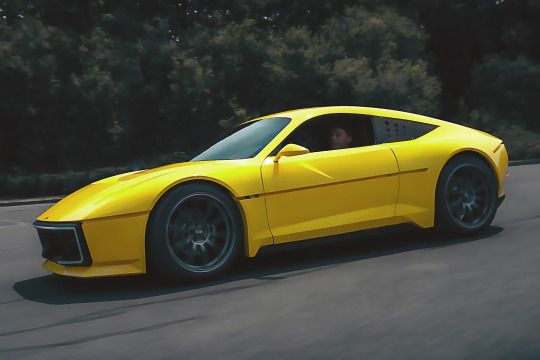


Espera Hommage 550, 2023. A project by Ecoles Sbarro students who were commissioned by the Club Matra d'Alsace to create a tribute to the Matra-Simca Bagheera to mark that car's 50th anniversary. Like the original the neo-retro reinterpretation was mid/rear engined with 3 seats abreast. It was powered by a 220hp version of Peugeot's 1.6 THP 4-cylinder.
#Espera Sbarro#Espera Hommage 550#Ecoles Sbarro#homage#tribute car#one-off#mid-rear engine#concept#prototype#50th anniversary#design study#student design#3 seats abreast#turbocharged#Matra-Simca Bagheera
182 notes
·
View notes
Video
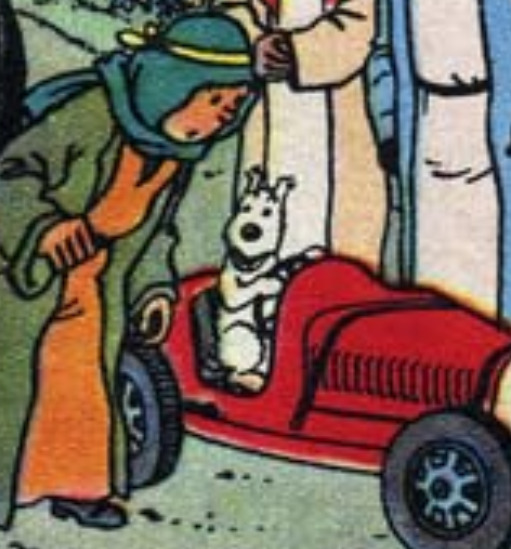

Transcript and translation under the cut...
...With the exception of one phrase I just can't make out. If anyone with better ears can make out what the part in brackets should be, please let me know. It's been plaguing me for weeks.
[NARRATEUR]: Au Salon, Tintin et le professeur Tournesol, bien connus déjà, [n’est plus encore de leur pair.] Avec une pendule, bien sûr, car pour se diriger dans cette cohue…
[NARRATOR]: At the Motor Show, Tintin and Professor Calculus, already well-known, [???]. With a pendulum, of course: just try to find your way in this crowd!…
Et c’est ainsi que Tintin a pu découvrir chez Peugeot, un nouveau modèle de grande luxe, le cabriolet qui complète la gamme 403 et 404.
And that’s how Tintin was able to discover a new luxury model at Peugeot, the convertible that completes the 403 and 404 line.
Quant au professeur Tournesol, il s’est plutôt intéressé au moteur à injection qui équipe le dit cabriolet.
As for Professor Calculus, he’s more interested in the injection engine that powers the convertible in question.
Cabriolet ou berline? Panhard, la plus ancienne marque du monde, propose élégamment les deux faces de l’alternative.
Convertible or sedan? Panhard, the oldest manufacturer in the world, elegantly offers both sides of the choice.
Sous le double signe sécurité et confort, la PL 17 propose le relax roulant. Et Tintin a noté que pour la première fois, un constructeur équipe sur demande sa voiture d’une ceinture spéciale.
The PL 17 offers relaxation on wheels under the double banner of safety and comfort. And Tintin has noticed that, for the first time, a manufacturer will fit its car on demand with a special seatbelt.
Un coup d'œil en passant sur le Fiat 2003 [sic], porte-drapeau de la production italienne.
A glance, in passing, at the Fiat 2300, flagship of Italian production.
Tiens? Milou. Il a choisi, lui, la voiture de l’avenir. Moteur à turbines, prix approximatif soixante quinze millions, et pavillon mobile, car il faut tout de même pouvoir rentrer dans une voiture.
Oh, it’s Snowy. He’s chosen the car of the future. A turbine engine, an approximate price of 75 million, and a movable roof, because you still have to be able to get into the car.
Pendant ce temps:
Meanwhile:
Dupond et Dupont, détectives, toujours en retard d’une longueur d’onde, emploient des ruses de Sioux pour percer le secret d’une nouvelle Simca Mille que des milliers de personnes ont déjà découvert au Salon.
Thompson and Thomson, detectives, always behind the curve, are using cunning tricks to unlock the secret of a new Simca 1000 that thousands of people have already discovered at the show.
Suivre la trace 5 chevaux, aussi léger qu’une gazelle, aussi souple qu’une belette et aussi rapide qu’un zèbre, n’est pas un sinécure.
To follow in the track of 100 horsepower that’s light as a gazelle, flexible as a weasel, and quick as a zebra is no picnic.
Mais Dupond et Dupont ont une conscience professionnelle à toute épreuve.
But Thompson and Thomson are extremely dedicated to their work.
Vu! Je dirais même plus: Vu!
Got it! To be precise: Got it!
dailymotion
It’s in French.
It’s Tintin (Jean-Pierre Talbot), Calculus (Felix Fernandez), and Snowy at a car show in 1962.
R.I.P Franky Francois,Andre Marie,Felix Fernandez, and the dog who played Snowy.
53 notes
·
View notes
Text
Stuck silver: 1968 Simca 1200S Coupé by Bertone
It’s already been a while since we published a Simca 1200S, and the reason is that lately they only find one at high prices, but this could be an opportunity for someone to get their hands on an affordable specimen. Obviously the reason is easy to understand: the car needs some work starting with the engine which the seller says is stuck. Unfortunately, the aforementioned is the only information…
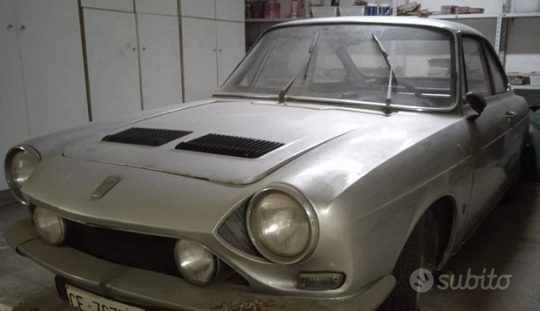
View On WordPress
5 notes
·
View notes
Photo
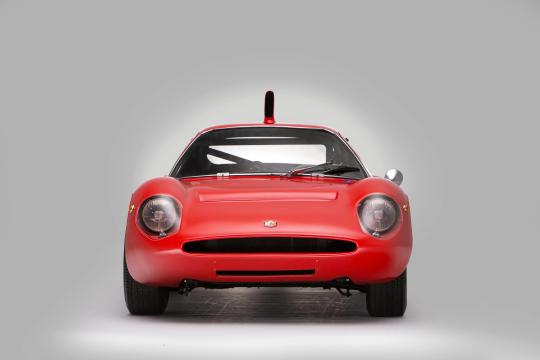
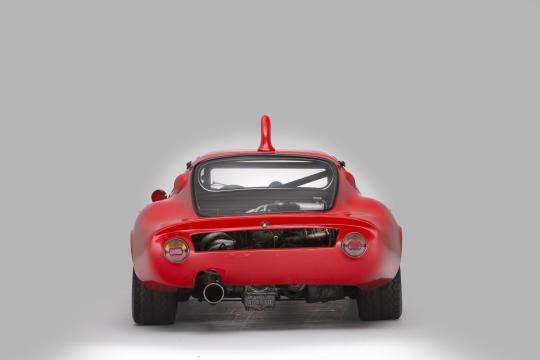


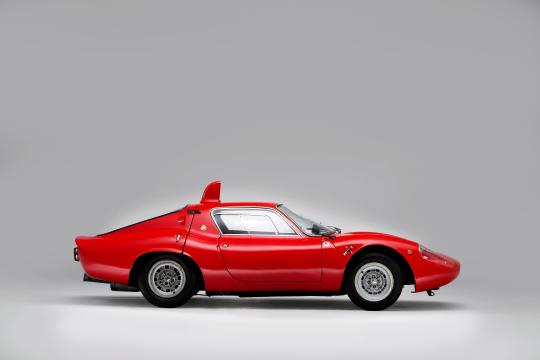
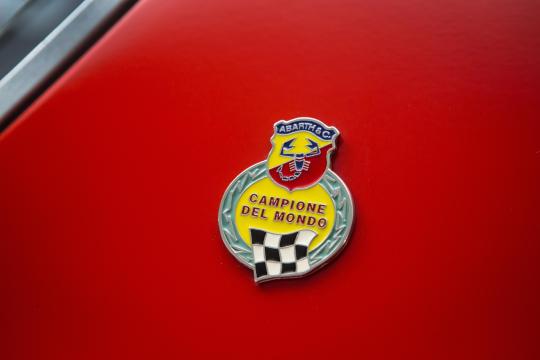

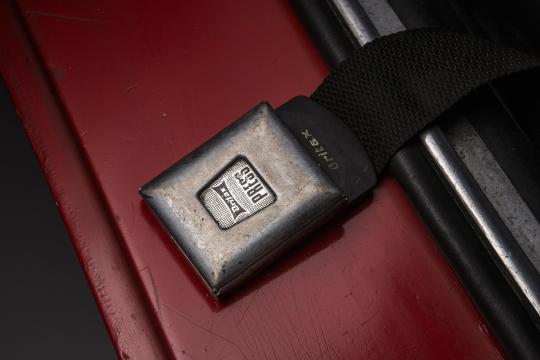

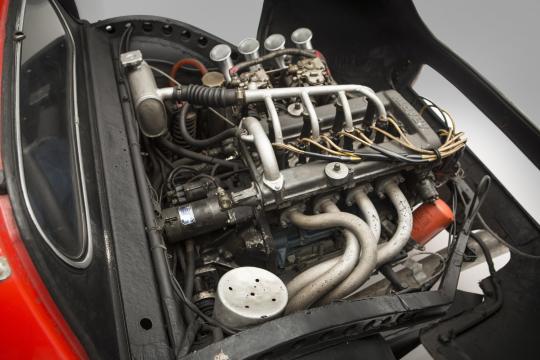
Abarth 1300OT Periscopica Coupé
In 1958, the American Chrysler Corporation pursued an entry into the European motor manufacturing market by buying 15 per cent of the French Simca company's stock from Ford. At that time, however, the dominant shareholder remained Fiat of Turin, and their influence remained distinctively apparent in the engineering and design of Simca cars for several years into the early 1960s. However, in 1963 Chrysler increased its Simca stake to a controlling 64 per cent by purchasing stock from Fiat, subsequently extending that holding to 77 per cent.
Chrysler had no interest in any continuation of the previously successful Simca Abarth and Abarth Simca high-performance car collaboration, which came to a juddering halt. In Turin Carlo Abarth found himself left more or less high and dry, but the supply of basically Simca 1000 chassis floor pans, upon which the sleek and superfast Abarth Simca 1600s and 2000s had been based, left quite a number in stock, as yet unused. The popular legend is that it was upon these unused Simca platforms that Abarth then founded his 1300cc class Gran Turismo design for 1965 – the OT 1300. Abarth's technical team under Mario Colucci had developed a boxed pressed-steel chassis structure on the modified Simca 1000 floor pan to which allindependent suspension was attached with componentry drawn from the Fiat 850 shelves. The Abarth OT 1300 then emerged, to race for the first time as a prototype in the September, 1965, Nurburgring 500-Kilometre classic.
Driver Klaus Steinmetz hammered the new Coupé home to a fine third-place finish overall and the OT 1300 was up and running into the record books, becoming one of the most successful – and also one of the most distinctive – models that Abarth & C ever produced. The OT 1300's rear-mounted all-Abarth engine was overhung – in best Carlo Abarth-approved style. It was a 4-cylinder unit with twin overhead camshaft cylinder head, using a block with cylinder bore and stroke dimensions of 86mm x 55.5mm to displace 1289cc.
With two valves per cylinder and a 10.5:1 compression ratio, the engine breathed through two twin-choke Weber 45DCOE9 carburettors. Ignition was by two plugs per cylinder, fired by single distributor. Dry-sump lubrication was adopted and the power unit produced a reliable 147bhp at 8,800rpm. This lusty engine, perfected by Abarth's power-unit specialist Luciano Fochi with five main-bearing crankshaft, drove via a five-speed and reverse Abarth transaxle.
Wheelbase length of the OT 1300 was nominally 2015mm, front track 1296mm and rear track 1340mm. It featured moulded glassfibre clamshell-style opening front and rear body sections moulded by Sibona & Basano in Turin, and this pert-nosed Coupé became a familiar sight dominating its class for three consecutive years. Production of the OT 1300 began on May 15 1966 and ended on March 30, 1966, by which time the minimum production number of 50 required by the FIA for homologation as a Gran Turismo model had (allegedly) been achieved. The most distinctive single characteristic of the OT 1300 Coupé, apart from its huge International success within its class, was its adoption of the Periscopica air-cooling intake on the rear of the cabin roof. Casual onlookers would assume that the periscopelike intake fed intake air into the rear-mounted engine, but this is absolutely not the case. Instead, the water and oil-cooling pipe runs through the cockpit area heated-up the cabin to what was generally considered to be an unacceptable level for endurance racing, and the periscope intake merely blasted cold air down into the cabin to cool the driver himself...
From the OT 1300 Mario Colucci developed the OT 2000 Coupé using the 1946cc 4-cylinder power unit perfected by his colleague Luciano Fochi and with some 215bhp at 7,600rpm that largerengined model was capable of exceeding 165mph in a straight line. In fact all these Abarths with their sleek aerodynamic bodies and light weight really were exceedingly rapid by the standards of the time and within their respective capacity classes.
103 notes
·
View notes
Photo

Prince Bira in a Simca-Gordini 15 lasted until the 51st lap of the 1952 Swiss GP when engine trouble forced a retirement.
13 notes
·
View notes
Photo

1946 Jean-Pierre Wimille Prototype No 1 for @jobjoris' #fullfrontalweek. A 3-seater with steering wheel in the middle, engine from a Citroën 11 CV. Jean-Pierre Wimille was a pretty successfull French racing driver on Bugattis and Alfa Romeos, 1937 and 1939 winner at Le Mans on Bugatti Type 57...He built around 8 cars before he died in a Simca-Gordini at practice runs for the 1949 Buenos Aires Grand Prix. #JeanPierreWimille #WimillePrototype #Wimillecar #Citroën11CV #Prototype #conceptcar #pharesjaunes #frenchcar #frenchcars #voitureancienne #moteurflottant #voiturefrancaise #europeancar #classiccar #oldcar #carworld #classiccarspotting #obscurecar #rarecar #teilixwimille #oldtimer #aerodynamiccars #CarPhotography #classiccaroftheday #automotivephotography #classiccarsdaily #AutoworldBrussels #carmuseum (hier: Autoworld) https://www.instagram.com/p/Cc98BZgoHqr/?igshid=NGJjMDIxMWI=
#fullfrontalweek#jeanpierrewimille#wimilleprototype#wimillecar#citroën11cv#prototype#conceptcar#pharesjaunes#frenchcar#frenchcars#voitureancienne#moteurflottant#voiturefrancaise#europeancar#classiccar#oldcar#carworld#classiccarspotting#obscurecar#rarecar#teilixwimille#oldtimer#aerodynamiccars#carphotography#classiccaroftheday#automotivephotography#classiccarsdaily#autoworldbrussels#carmuseum
3 notes
·
View notes
Video
1964 Apollo 3500 Gran Turismo by Alden Jewell Via Flickr: Apollo (1962 automobile) From Wikipedia, the free encyclopedia Jump to navigationJump to search Apollo Apollo 5000 GT Coupe.jpg 1965 Apollo 5000 GT Coupe Overview ManufacturerInternational Motor Cars Also calledVetta Ventura Production88 Model years1962 - 1965 AssemblyOakland, California, United States DesignerRon Plescia & Franco Scaglione Body and chassis ClassSports Car Body stylefastback coupe or convertible RelatedCarrozzeria Intermeccanica Powertrain Engine 215 cu in (3.5 L) Buick V8 (gasoline) 300 cu in (4.9 L) Buick V8 (gasoline) Transmission4 speed manual (automatic optional) Dimensions Wheelbase2,464 mm (97.0 in)[1] Length4,445 mm (175.0 in) Width1,676 mm (66.0 in) Height1,270 mm (50.0 in) Curb weight1,030 kg (2,271 lb) Chronology PredecessorNone SuccessorNone The Apollo was an American sports car/personal automobile, initially manufactured from 1962 to 1964 by International Motor Cars in Oakland, California. Engineered by Milt Brown and designed by Ron Plescia, it featured handmade Italian aluminum coachwork by Intermeccanica, with a choice between two-seater convertible or fastback styles. Power came from a 215 cu in (3.5 l) or 300 cu in (4.9 l) Buick[2] engine mated to a 4-speed manual. The initial company built 42 cars before suspending production while seeking new financing. IMC allowed the sale of body/chassis units to Vanguard Motors in Dallas, Texas, to produce cars under the Vetta Ventura name. These were made until 1966 as a stop-gap measure to keep the carrozzeria (body producer Intermeccanica) in business until new backers were found. Other production arrangements followed. A total of 88[3] have been produced to date by all entities. History Frank Reisner, a former chemical engineer born in Hungary, raised in Canada and educated in America,[4] established a company that later produced complete bodies -- painted and trimmed -- for the Apollo as well as the Texas-built Vetta Ventura (which was the same car with a different name). Reisner, on holiday in Italy in 1959, decided that he loved Turin and set up shop there as Intermeccanica producing tuning kits for Renaults, Peugeots, and Simcas. The Apollo project was the dream of a young California engineer, Milt Brown, who desired to build an American answer to European GTs, such as the Aston Martin DB4 and Ferrari coupes. Brown, who was looking for a coachbuilder, met Reisner at the Monaco Grand Prix in 1960. A deal was made and the first Apollos were built by early 1963 by Brown's International Motor Cars. Intermeccanica hand formed and trimmed the steel bodies in Turin, Italy, and then shipped them by sea to Oakland, California, where the drive train was installed. The prototype's design was by Milt Brown's friend, Ron Plescia, but the nose was too long and the rear vision limited, so Reisner commissioned former Bertone stylist Franco Scaglione to revise it. The finished car, sold by Brown's International Motorcars of Oakland, was well received and had famous owners such as Pat Boone. The base price was $6000 and the top speed was claimed to be 150 mph (240 km/h). A prototype 2 + 2 was shown in New York in 1965. It was shown again in 1966 as the Griffth GT.[4] International Motor Cars sold 42 cars (40 coupes and one spyder, including the prototype) before production stopped in mid-1964 due to lack of financing. IMC then made a contract with Reisner (to keep his operation going) allowing Intermeccanica to supply body/chassis units to Fred Ricketts, owner of Vanguard Industries, an aftermarket supplier of auto air conditioners in Dallas, Texas. Vanguard sold it as the Vetta Ventura. The intent was to give IMC time to find new financing as well as keep Intermeccanica alive. Vanguard built only 11 cars, with shop foreman Tom Johnson purchasing the leftover 11 body/chassis units and completing them as late as 1971. A third attempt to produce the Apollo was by attorney Robert Stevens. His Apollo International company of Pasadena, California completed only 14 cars, with foreman Otto Becker finishing another six. Four body chassis/units were never claimed by Apollo International and were sold by US Customs to Ken Dumiere. A pair of Apollo 3500 GTs were used to portray the Thorndyke Special race car which was featured in The Love Bug, a 1968 Disney movie. One of the pair has been fully restored.[5][6] Reisner later developed projects such as the Griffith, the Murena GT, and the Italia by Intermeccanica. Intermeccanica went on to produce the Veltro 1500, the Griffin (which was a version of the prototype Apollo 2+2), the Phoenix, and the Omega among others. Specifications EngineMax powerTransmissionWheelbaseLengthWeight 215CID Buick V8225 hp (168 kW)4-speed manual97 in (2,464 mm)177 in (4,496 mm)2,540 lb (1,150 kg) [1] References "1963 Apollo GT Convertible performance data, specs & photo". Automobile-catalog.com. Retrieved 2011-11-20. Gunnell, John A. (ed.). Standard Catalog of American Cars 1946-1975. krause publications. ISBN 0-87341-027-0. Northrup, Robb Apollo GT: The American Ferrari Rogliatti, Gianni (Spring 1971). "Frank Reisner's Intermeccanica - One of the Few That Made it". Automobile Quarterly. New York, NY: Automobile Quarterly. 11 (3): 309–311. LCCN 62004005. "1963 Apollo 3500 GT in "The Love Bug, 1968"". IMCDb.org. Retrieved 2011-11-20. "The Thorndyke Special". Barn Finds. 2013-11-07. Retrieved 2016-12-23. Categories: Sports carsDefunct motor vehicle manufacturers of the United StatesMotor vehicle manufacturers based i
3 notes
·
View notes